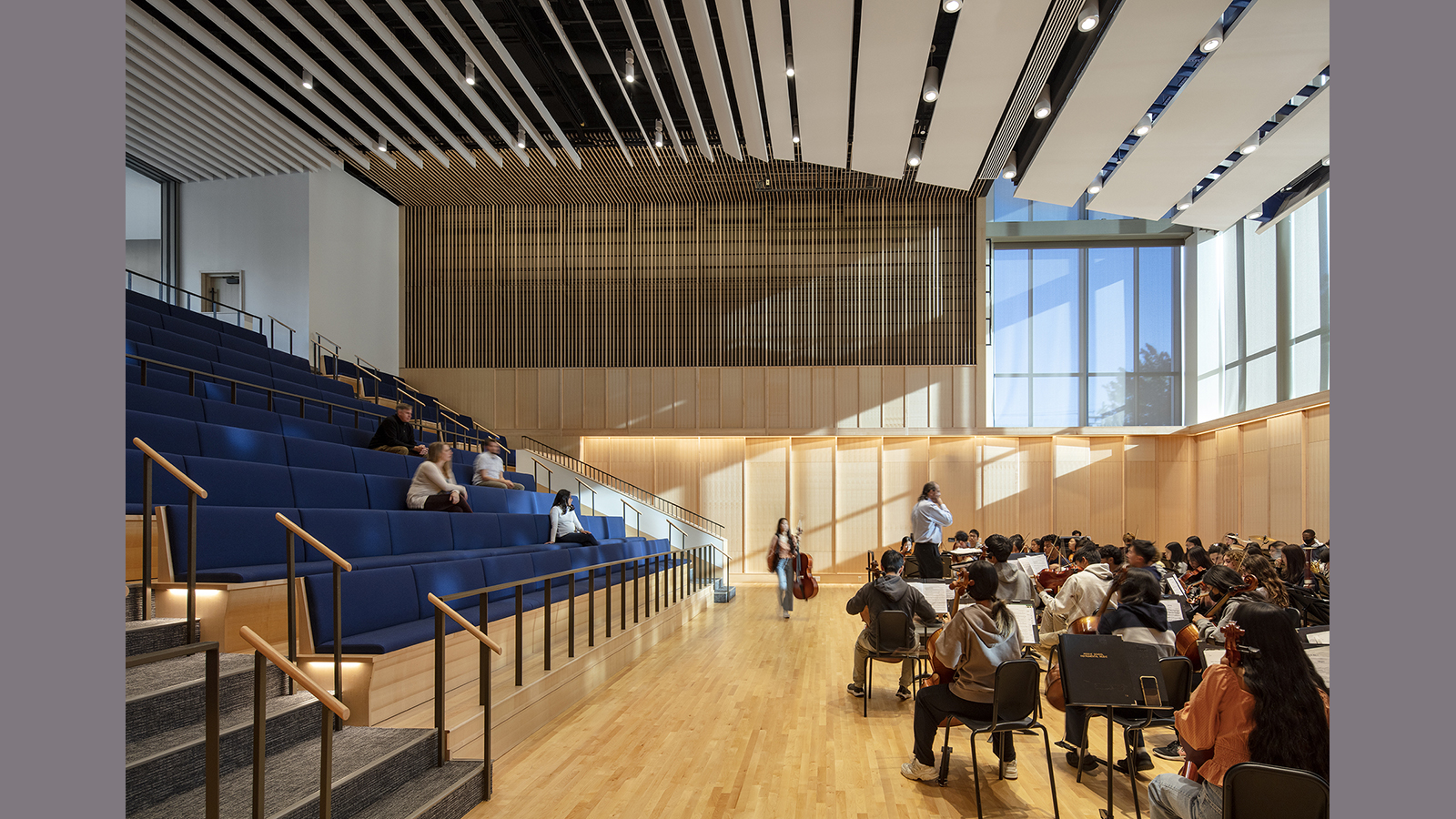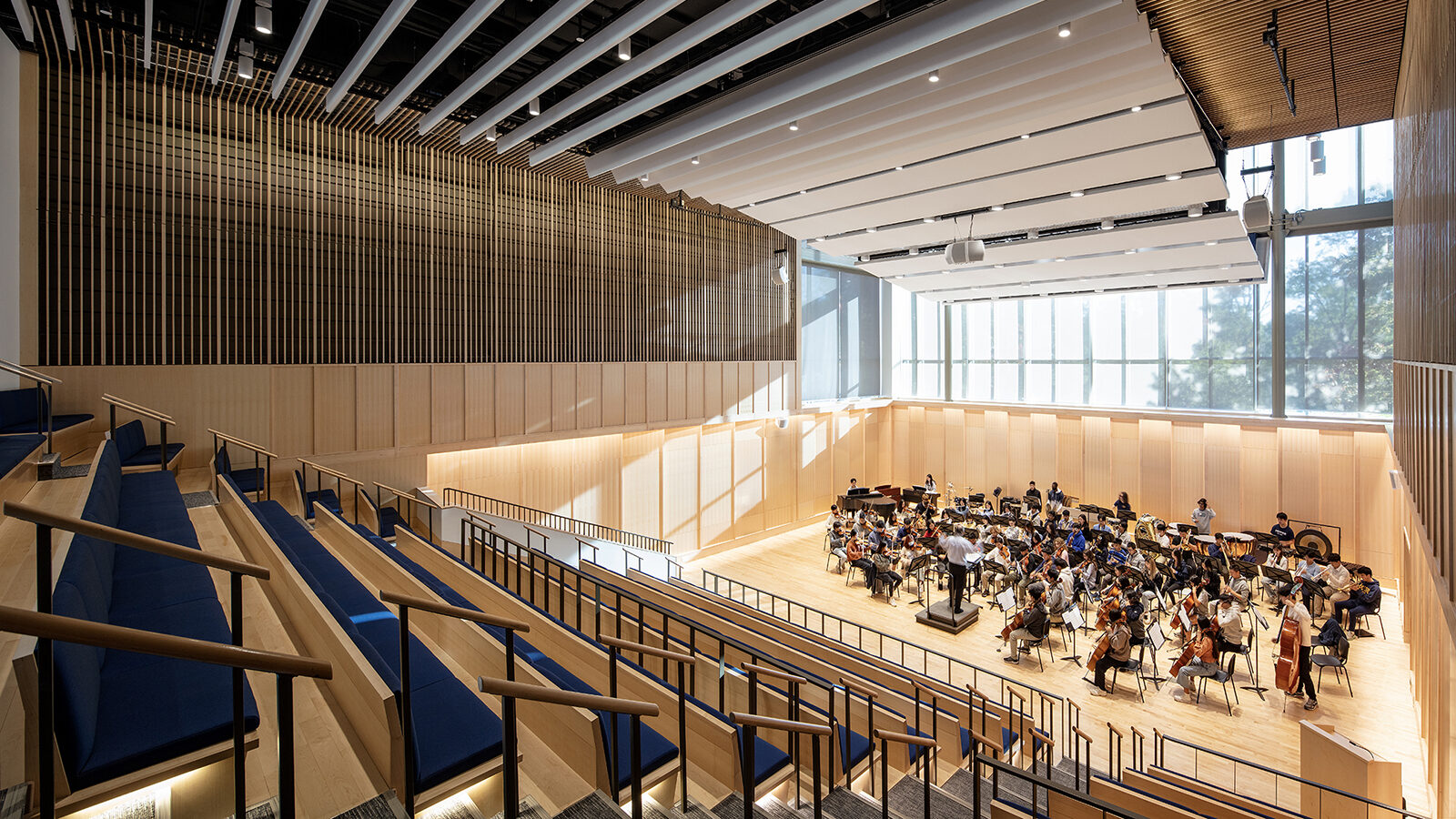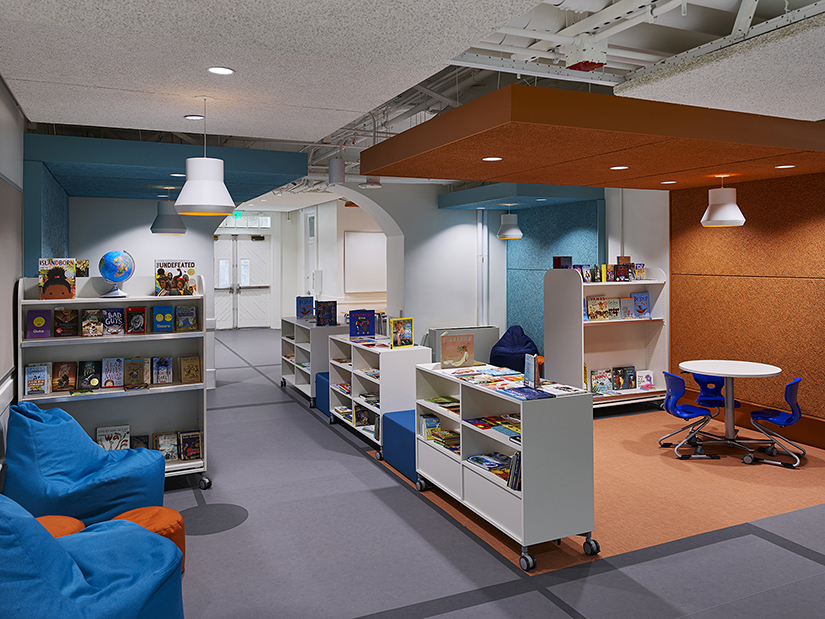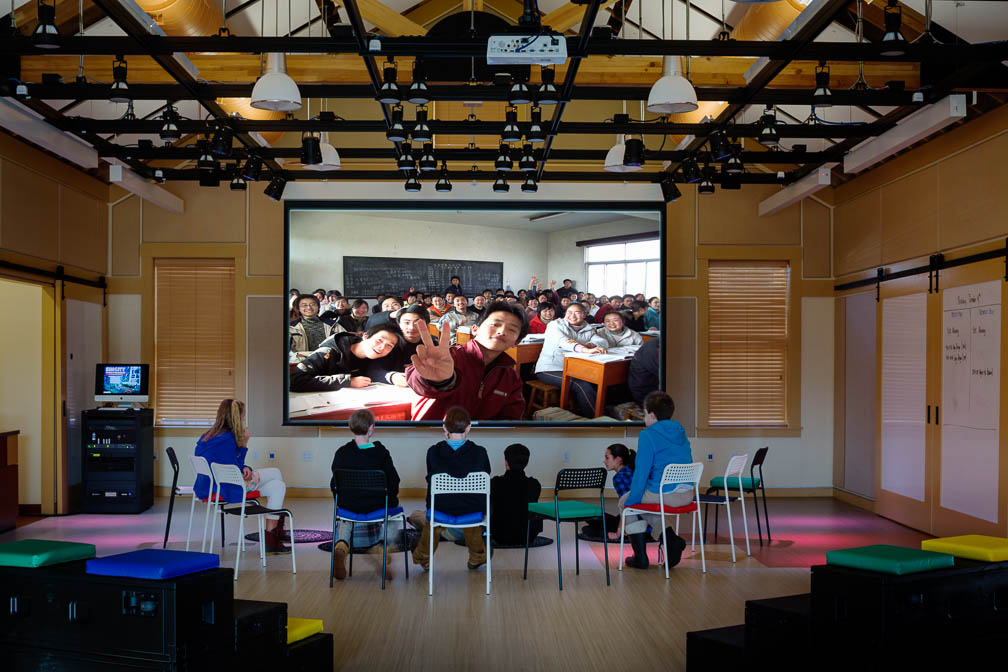Nicole Cuff
K-12 Education | Market Leader
Principal

COVID-19 has changed how school buildings need to work acoustically to support educators and students alike. Large multi-purpose rooms, meeting spaces and auditoriums are more apt to be more lightly occupied than before COVID, which presents a new challenge in terms of controlling reverberation, and maintaining excellent speech intelligibility for students and educators.
Unlike in the past, most, if not all, classrooms must provide excellent listening and speaking conditions simultaneously to accommodate an unprecedented variety of in-person learning, remote learning, and hybrid learning.
The pandemic altered many facets of school life, including how people attend school performances and other public gatherings. Due to the risk of contracting COVID and related illnesses, many people are staying home more often. This means that performances are more lightly occupied than in the past, which is a new challenge to control reverberation, and maintain excellent speech intelligibility.
Acousticians design auditoriums based on an informed discussion with ownership stakeholders on the expected size of audiences and expected uses of the space. This is important acoustically because people are sound absorptive and a full audience results in a different sound experience within the space, compared to a small audience surrounded by large areas of empty seats. One way to control for the change in audience count is the chair selection, ensuring that upholstered seats have absorption characteristics similar to an audience member. Unfortunately, the existing chairs in many auditoriums and multipurpose rooms have hard finishes, or even if upholstered, they are much less absorptive than a person.
If faced with existing seating that has little or no upholstery, consider adding variable acoustics, such as roller fabric banners to help control reverberation, and enhance the sound quality of both music and speech when audiences may be small. There are elegant solutions where the banner box, containing the absorptive roll, can be hidden under balconies or in window pockets. The locations of these wall banners may be limited by such items as lighting fixtures, or window treatments.
Sound system enhancements are another effective way to improve listening conditions in semi-reverberant settings with small audiences. This is mostly due to loudspeaker selection and placement, to make sure amplified sound is limited to occupied seating areas, and limiting sound “spill” from reflecting off the hard room finishes,
Also, the background noise levels will need to be reviewed and mitigated, if they prove to be in conflict with speech intelligibility. Noise control may also be needed at video projectors or lighting equipment.

How can we provide excellent in-person and remote acoustic conditions in classrooms that were designed for in-person learning only? Acoustical upgrades fall into the following categories:
Upgrade the room finishes
Assuming that typical classrooms already have acoustical tile ceilings, sound-absorbing finishes should be added on the walls to improve speech intelligibility both for remote and in-person communication. In rooms with available wall space, providing wall absorption between 3’-0” and 7’-0” AFF on the wall opposite the lecturer, and one perpendicular wall to the rear wall, is effective to reduce reverberation, and improve listening conditions. The reality, of course, is that most K-12 classrooms do not have the available wall space for treatment, because most walls are either glazed or covered with shelves or whiteboards. (Therefore, for most rooms, the choice is more about technology, and less about physical changes to the room finishes space, as discussed below.)

Upgrade classroom technology
For any K-12 classroom with a speech reinforcement system, the most important aspect to achieving good speech intelligibility is microphone placement: the teacher should have their microphone clipped very close to their mouth. It may be necessary to provide each teacher with their own microphone for health reasons. Beyond microphone technique, there are two main approaches to teacher speech amplification:

Upgrade sound isolating constructions
Sound isolation between hybrid learning classrooms is more critical than in-person learning classrooms because the audio emitted out of the loudspeaker from the remote learners is much louder than sound from an unamplified lecturer and group activity from in-person learners. Communicating doors, corridor doors, and windows must be well sealed to reduce noise transfer between spaces, so that users in the classroom are not disrupted by sound from other classrooms, and users in adjacent spaces are not disrupted by classroom learning. If doors do not already have gaskets, install gaskets on the head, jamb and door bottom of the door. Be sure that the door is light tight – if light can pass through, so can sound! Windows should be well sealed too. Sealing windows and doors will also will improve energy efficiency, as an added advantage.
Control HVAC noise
During COVID, ventilation air was typically increased in many classrooms to improve airflow circulation. More airflow tends to increase equipment noise, resulting in a decrease of speech intelligibility. Excellent speech intelligibility depends on quiet background noise and the talker and the listener being near to each other, without physical barriers in the way, like walls or masks. The background noise level from existing equipment may or may not be a nuisance as it relates to speech intelligibility over the virtual learning system. While we recognize that upgrades to existing systems may be cost-prohibitive, or present other challenges, one way to reduce this noise is to reduce the operation capacity, which will result in lower noise levels. Another option is to configure the classroom so that the students are as far as possible from HVAC supply and return openings. Note that microphones should also be located as far as possible from HVAC terminal devices (such as variable air volume boxes, fan coil units and fan powered terminals).
For any HVAC system upgrades, be sure to select the quietest equipment available for the application. Equipment may need additional noise control measures, such as sound attenuators, duct lining, or vibration isolation systems. If your institution is struggling with these challenges discussed, Acentech’s experienced consultants can provide cost-effective solutions within budgetary and physical constraints.